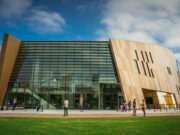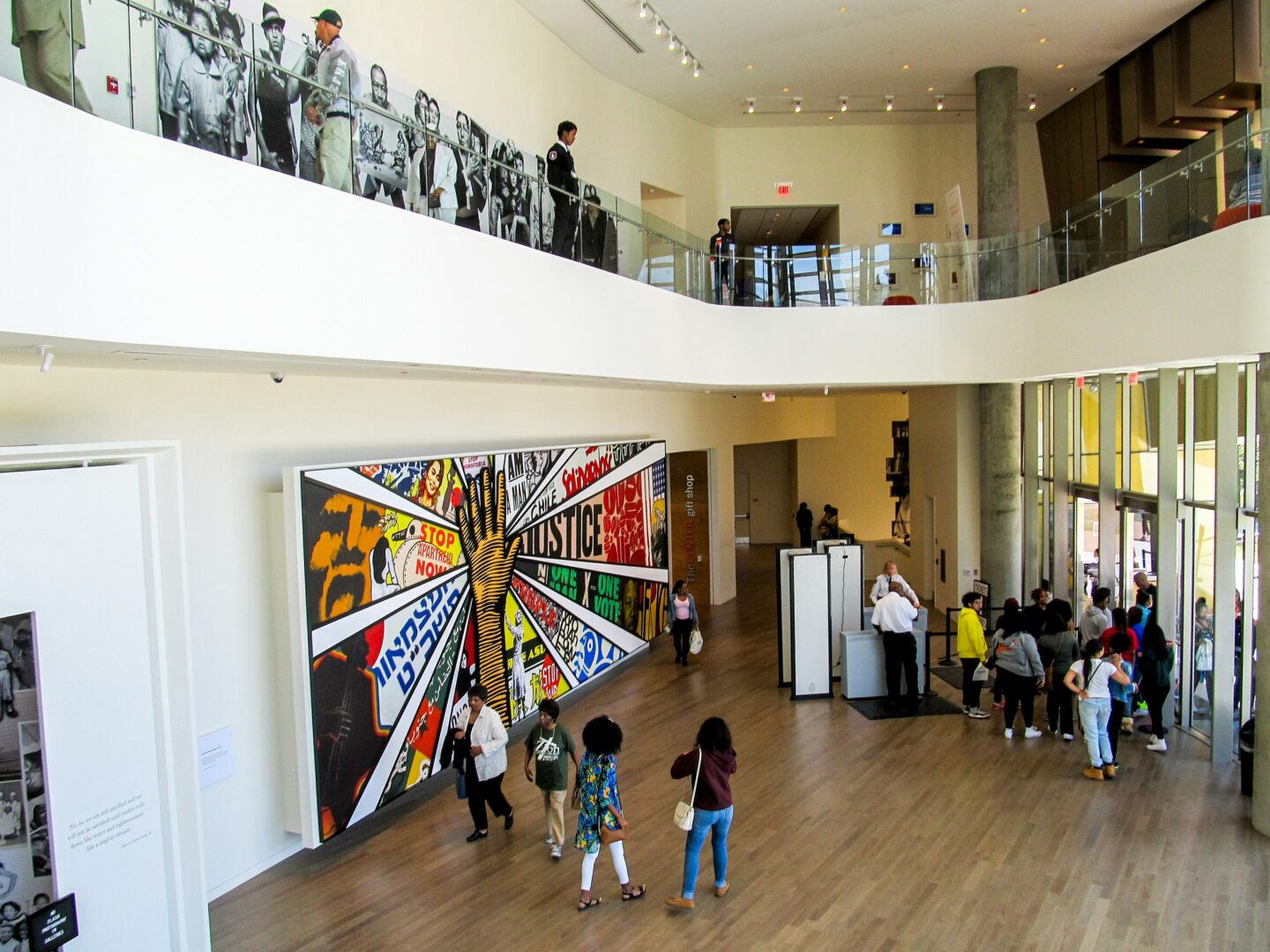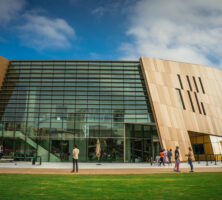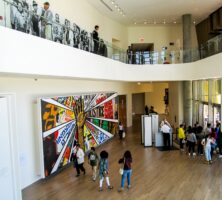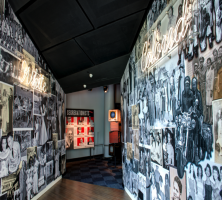The National Center for Civil and Human Rights (NCCHR), located in downtown Atlanta, is a museum devoted to exploring the connections between the U.S. civil rights movement and the global struggle for human rights. The 42,000 square-foot facility opened in 2014 and features among its permanent exhibits the papers of Martin Luther King Jr.
Though discussion of such a facility had circulated among Atlanta leaders for years, the effort only gained momentum when Ambassador Andrew Young and Evelyn Lowery approached Mayor Shirley Franklin about the matter in the early 2000s. With assistance from Central Atlanta Progress and the Boston Consulting Group, Franklin then appointed a blue-ribbon working group to determine feasibility and make recommendations.
Among the earliest and most consequential issues to resolve was the facility’s location. Some advocates encouraged the selection of somewhere in the Old Fourth Ward near the Martin Luther King Jr. National Historic Park Visitor Center, the old Ebenezer Baptist Church, the King Birth Home, the Martin Luther King Jr. Center for Nonviolent Social Change Inc., and the APEX Museum, while others promoted the vacated World of Coke building near the state capitol. The donation by the Coca-Cola Company of two-and-a-half acres adjacent to the new World of Coke, the Georgia Aquarium, and CNN, cemented the site selection on Pemberton Place at Centennial Olympic Park.
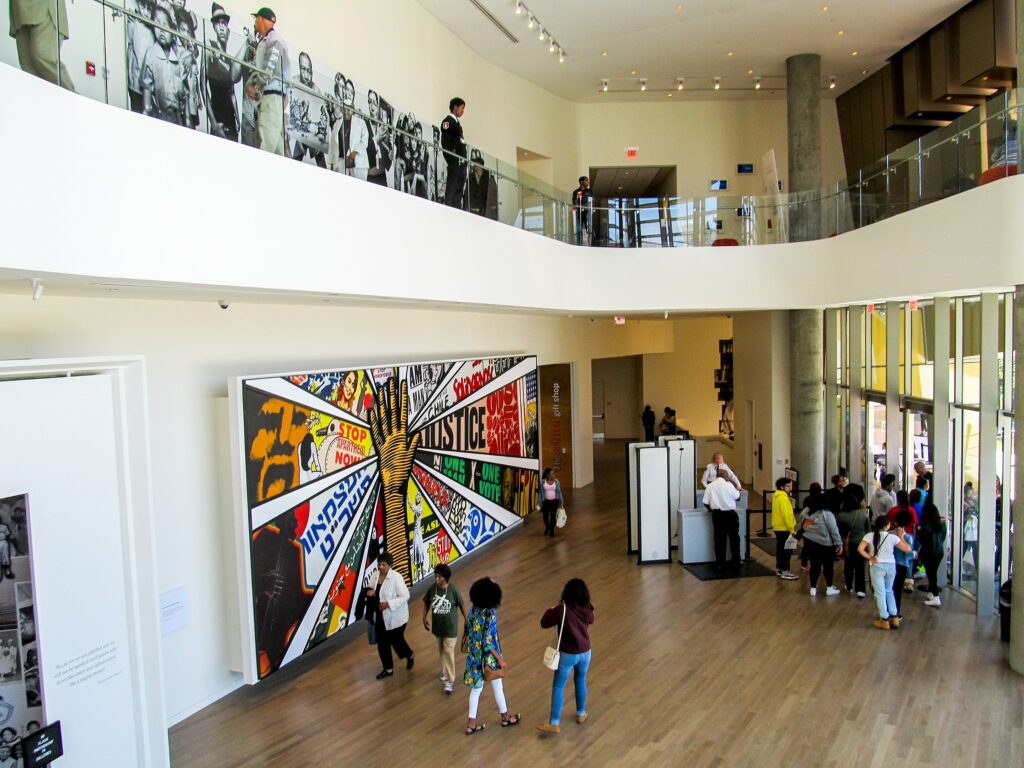
Photograph by Marco Correa
The working group’s report called for a “living” museum with interactive exhibitions that would adopt a broad view of civil and human rights, while “highlighting the groundbreaking contributions of Atlanta’s and Georgia’s individuals, institutions, and events.” Having recently spent $12 million for the exclusive right to display the papers of King—some 13,000 items archived at Morehouse College—the city intended to exhibit selections from the collection on a rotating basis in a dedicated gallery of the NCCHR. But while the modern civil rights movement would be the museum’s primary focus, the working group also wanted the museum to engage in a wide range of discussions about human rights movements in the U.S. and abroad.
Embracing the report, Mayor Franklin announced the partnership to build the NCCHR in 2007 and selected Doug Shipman of the Boston Consulting Group as the organization’s first chief executive officer (CEO) and David Salk Mandel—formerly of Ralph Appelbaum Associates and the New York Historical Society—as its director of exhibits and design. To design the facility, the NCCHR board hired architect Philip Freelon, who had previously worked with the prominent African American firm of J. Max Bond Jr. that executed the Smithsonian National Museum of African American History and Culture in Washington, D.C. The board also hired Tony Award-winning director director and producer George C. Wolfe as chief creative officer and Jill Savitt of the U.S. Holocaust Memorial Museum in Washington, D.C. as human rights exhibition coordinator. The Rockwell Group executed the exhibit designs.
Poor economic conditions slowed fundraising for a time, and the facility’s groundbreaking was postponed until 2012. Of the estimated $80 million expense—a figure that included a $5 million endowment—nearly $40 million came from private donations while $40 million derived from public Tax Allocation District monies scheduled to expire in 2012 if not accessed. An impressive roster of local donors and international corporations helped pay for the facility with donations of $1 million or more coming from Delta Airlines, The Home Depot, Turner Broadcasting, AT&T, Georgia-Pacific, the Wilbur and Hilda Glenn Family Foundation, the Arthur M. Blank Family Foundation, the AEC Trust, and SunTrust Banks (now Truist), Wells Fargo, and Bank of America.
Eager to start programming, the NCCHR began in the fall of 2011 an oral and visual histories project funded by the Ford Foundation. Working with broadcast professionals from CNN and academic experts from Georgia State University, center staff undertook dozens of interviews with movement veterans for use in future programming. Some of these interviews became components in the Freedom Mosaic, the NCCHR’s online educational resource.
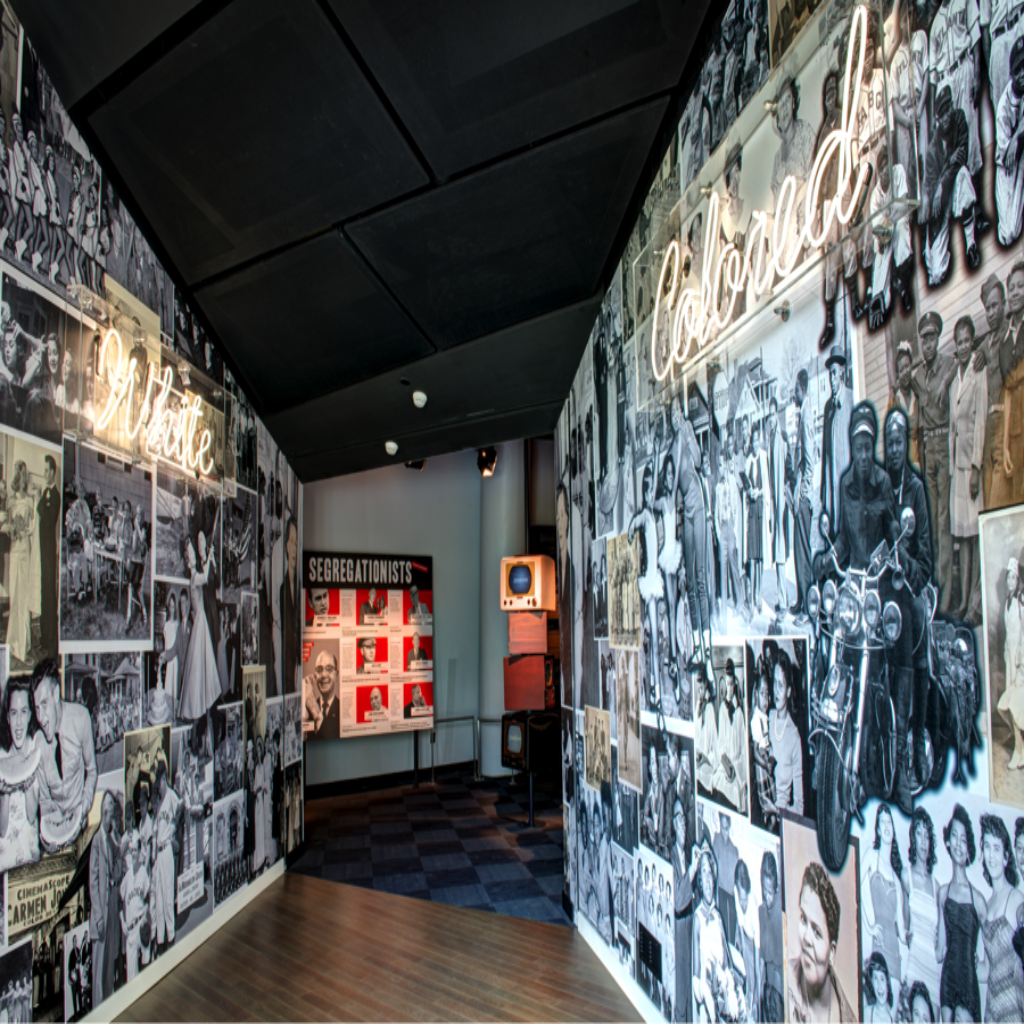
Photograph from the National Center for Civil and Human Rights
Working with international design firm HOK, the Freelon Group designed an environmentally sustainable building with LEED Gold certification and a green roof, using long exterior walls that curve like cupped hands, holding glass panels at its open end. In October 2015 the Atlanta Business Chronicle named it “Atlanta’s Best Architecture.”
The NCCHR facility consists of three levels. The bottom floor houses the Martin Luther King Jr. Collection Gallery, which displays selections from King’s manuscripts, a large lobby area lined with paintings by Georgia artist Benny Andrews depicting the life of civil rights icon and Atlanta Congressman John Lewis, and an auditorium. The second level features the main lobby overlooking Pemberton Place, the reception desk and gift shop, and the main exhibit gallery investigating the modern civil rights movement. The primary exhibit, “Rolls Down Like Water: The American Civil Rights Movement,” uses historic film footage to retell movement history set alongside such features as an interactive lunch counter experience. The third floor concludes the exhibition with its interactive human rights gallery. Called “The Spark of Conviction: The Global Human Rights Movement,” the exhibit builds on Eleanor Roosevelt’s role in the Universal Declaration of Human Rights by encouraging visitors to self-identify with international struggles and to consider their “ethical footprints” in their daily lives.
Regular programming at the NCCHR includes lecture series and community dialogues, film screenings, Women’s Solidarity Society events, and an annual event in December recognizing the Universal Declaration of Human Rights. Local and national media applauded the center’s opening in 2014, though some critics questioned its expansive treatment of human rights, suggesting that its section on global struggle raised more questions than it answered. But in Atlanta, where some observers likened its impact to that of the Olympics, the center quickly became a cultural landmark and a reflection of improving conditions downtown.
The NCCHR receives approximately 200,000 visitors each year, including more than 50,000 students. A year after its opening, Shipman resigned as founding CEO of the NCCHR in June 2015, later taking the position as President and CEO of the Woodruff Arts Center.


